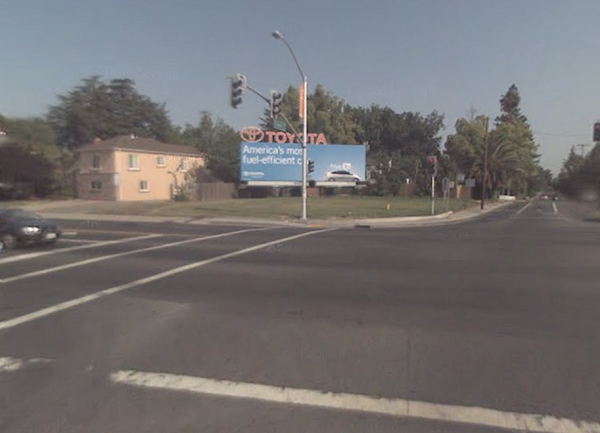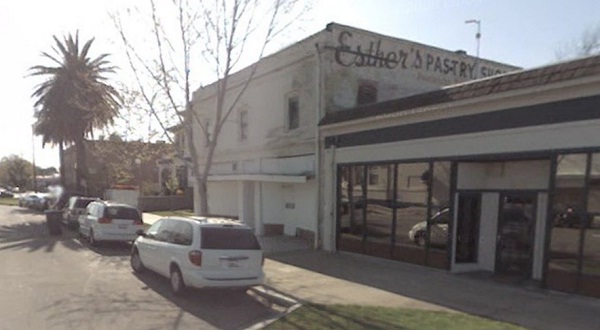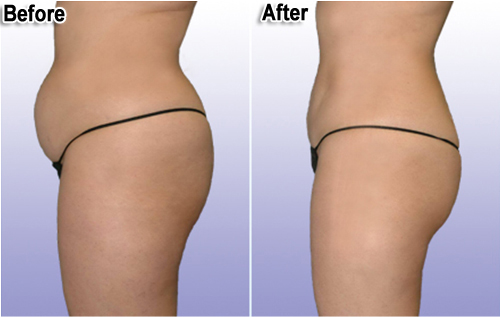I started my Monday this week with a hit-and-run accident. I was rear-ended at a red light and by choosing to get out of the way of oncoming traffic (before being hit again) I allowed the person to hit me to leave the scene before I could get any of their information. I’ve already paid for one hit-and-run accident in this car – and I’m not all that keen on paying off my deductible because someone else wasn’t paying attention to the road. Yet I had little rational choice in the matter. And the reason? Street design.
My neighborhood was bisected by Highway 99 in the late 50’s. Among the various deleterious impacts on the neighborhood resulting from being cut off from the rest of the area, was the mis-use of the existing surface streets. The streets in my neighborhood were never intended to be thoroughfares. Originally the neighborhoods were connected at almost every block. The more active streets featured two painted lanes of traffic and shoulders wide enough for parking, but these were supplemented by numerous single lane residential streets that netted the neighborhood. When the highway was added all but a few of those connecting streets were blocked, and one of the larger active streets was, with some modification, turned into a highway exit/onramp – the only nearby exit/onramp for the highway, servicing a law school, two factories, a large community college, and three residential neighborhoods. Traffic in this area gets very complex during peak periods – with the streets often backing up for a half-mile or more with a combination of buses, big-rigs, and all sorts of personal autos. The onramps are metered, which, while it helps reduce highway traffic, causes snarls of cars and buses on the surface streets.
In part due to the traffic situation, and in part because of the design, accidents are very common in this area – everything from cars going off the bridge to crash on the highway below to collisions between cars to pedestrian and bicyclist accidents. I will not ride my bicycle on this section of road – and after a handful of close calls, I’m even reluctant to walk. Additionally, the sheer number of accidents means that the streets and fences are almost always undergoing repairs with lanes blocked off and sidewalks closed.
Honestly, I’m amazed there aren’t more accidents then there are.
Today was my turn. I was waiting at a red light when I was rear-ended and my car was bumped out into the intersection. It was the beginning of morning rush-hour and I know from experience that people coming into that intersection from the freeway seldom have limited visibility, yet are reluctant to slow down if their light is green – which it was. My car was still running – still mobile – and I chose to pull forward until I could get out of the way. That meant driving across the bridge and pulling to the side of the road after the freeway. The fellow in the black late 70’s El Camino who hit me had no obligation to follow me – after all, his way was clear the moment I crossed out of the intersection – and he took the opportunity to make an illegal u-turn and hightail it out of there before I could get his license plate number.
Intersections like this abound in areas where we’ve taken low-capacity street infrastructure intended to handle a few cars at a time and tried to force-fit it to meet the needs of freeway culture. Yet the costs are much higher than the infrastructure retro-fit. A dozen motorists witnessed my accident this morning. They all had to face the same choice I did – stop in a place where it was not only going to block traffic, but where it was patently unsafe, or continue to a safer place and… and what? Reconvene? Assume that everyone involved would live up to their obligations and accept responsibility for their actions?
Reality says I’ll be paying my deductible. Again.
There is a lot of concern about improving this neighborhood and helping it to stabilize economically and socially. Yet that is impossible as long as the most basic infrastructure – the streets – are fundamentally unsafe and over-capacity. What if I had been on a motorcycle or a scooter or a bicycle or if I had been walking across the street? What happens when there is no safe way to stop and assist in an accident?
Road safety must go beyond lights and lines – lanes and timings. It must include buffers and space to both prevent and address accidents. And if the street cannot both be safe and manage the desired capacity, then maybe it is time to take a serious look at the design and start to figure out just how many lives the cheap ad-hoc solution will need to cost before it becomes too expensive.







